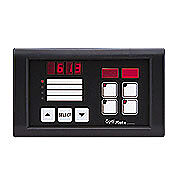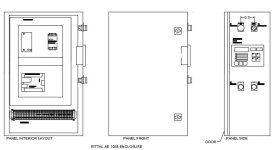Hi everyone,
I have a small machine that has been well-received on the manufacturing floor and 'they' would like to use it for multiple product lines. This means the ladder logic needs to behave slightly differently for each "mode"...different numeric constants, slightly different operation, etc. I would like to avoid installing a touchscreen and I was wondering about selector switches.
Is there a proper/best/common way to use a selector switch with a PLC? For example, if I want to toggle between 8 different "modes", would I:
1) Use an analog module and 8 resistors to create 8 different voltage levels?
2) Get an additional digital input module and give all 8 positions their own digital input?
3) Use three digital inputs as three 'bits' for 8 unique logical states?
4) I'm far from experienced in the field of PLCs...is there a piece of hardware out there that simplifies this task?
All suggestions welcome. I believe technically all of these options will work but I'm looking for the most reliable or common way of doing this. Sorry if this has been covered numerous times but my searches aren't helping...probably my lack of understanding & terminology.
Thanks!
I have a small machine that has been well-received on the manufacturing floor and 'they' would like to use it for multiple product lines. This means the ladder logic needs to behave slightly differently for each "mode"...different numeric constants, slightly different operation, etc. I would like to avoid installing a touchscreen and I was wondering about selector switches.
Is there a proper/best/common way to use a selector switch with a PLC? For example, if I want to toggle between 8 different "modes", would I:
1) Use an analog module and 8 resistors to create 8 different voltage levels?
2) Get an additional digital input module and give all 8 positions their own digital input?
3) Use three digital inputs as three 'bits' for 8 unique logical states?
4) I'm far from experienced in the field of PLCs...is there a piece of hardware out there that simplifies this task?
All suggestions welcome. I believe technically all of these options will work but I'm looking for the most reliable or common way of doing this. Sorry if this has been covered numerous times but my searches aren't helping...probably my lack of understanding & terminology.
Thanks!






